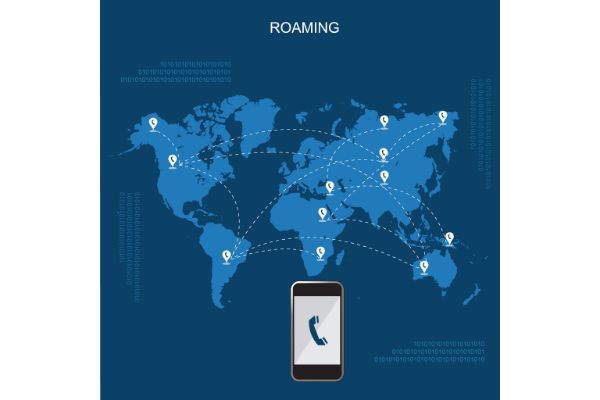Disclaimer: This post may contain affiliate links, meaning we get a small commission if you make a purchase through our links, at no cost to you. For more information, please visit our Disclaimer Page.
Extended network refers to the internet connection established with the “visited network” when you’re out of your default network’s coverage. The roaming network becomes functional when there’s a “roaming agreement” between the default network and the visited network.
This enables you to access the host network for making calls, using apps, etc., as you do with your local network.
Table of Contents
Differences Between Extended & Roaming Networks
The extended network is mainly used to refer to domestic roaming. Domestic roaming or extended network is a free service proffered by smartphone providers to customers. This assures their customers that their phones will function when they travel to another region.
Although currently offered without charges, some mobile plans still charge customers for providing extended networks. You should confirm the features of your phone plan with a customer care representative. It may be possible to switch to a better plan if available.
Whereas roaming networks or international roaming uses extended roaming to provide coverage to customers when they travel abroad. You should contact your service provider if you intend to use their line overseas because a roaming network can be expensive.
You may as well rent a SIM card instead of using a roaming network, as it is inexpensive and more affordable. In addition, renting a SIM card is a great way to avoid additional charges that may incur on your phone.
What Is an Extended Network?
An extended network happens when you’re in a place where your service provider’s cell tower isn’t available. Your service then becomes enabled through another network’s cell tower. An extended network allows your phone to switch to a different network with which your network provider has signed an agreement.
This often happens when people have to travel outside their region or country. The entire process is quite simple and doesn’t involve extra charges. One issue with this is that your data speed could reduce.
Extended network LTE is a common phrase smartphone carriers use when describing an extended network. The name is seen on the provider’s website and can be displayed on your phone instead of your carrier’s name. This occurs once it has established a connection with an extended network provider.
You’ll also encounter phrases like extended LTE, off-net coverage, extended coverage, domestic roaming, etc., used instead of the extended network. You won’t have to deal with these different phrases if you stick with a particular company. Note that other phrases are something used by companies to describe the exact services provided by their rivals.
The extended network feature will only turn on when your leading phone service provider isn’t available. This implies that you cannot switch back to your preferred provider manually. If you turn off your phone settings, you’ll be left with no service.
When you see “extended” displayed on your phone, it’s simply telling you that your provider’s network is out of range. Don’t turn your settings off; instead, switch to airplane mode for a few minutes and turn it off. Your phone should search for the visiting network and connect to it automatically.
The extended network feature will only turn on when your main phone service provider isn’t available. This implies that you cannot switch back to your preferred provider manually. If you turn off your phone settings, you’ll be left entirely with no service.
What Does a Network Extender Device Mean?
A network extender is a hardware device that enhances your provider’s cellular network in your home or around your vicinity.
This hardware is also called cell phone boosters, and it’s completely different from the extended network feature used for domestic roaming. There are other devices similar to the network extender used for boosting Wi-Fi networks
When using social media platforms like LinkedIn or Facebook, you may notice the extended network phrase pop-up. This feature is also unrelated to domestic roaming phone services. Instead, it’s used in referring to a second or third party friend or contact.
For instance, your Facebook friend would be in your immediate network of Facebook friends. While a friend of theirs who isn’t your mutual friend would be in your extended network.
Pros of Extended Network
- Extended networks support mobility. This means that you can travel from one area to another without getting disconnected.
- An extended network saves you the cost of buying new devices or resubscribing your phone line.
Cons of Extended Network
- Although it supports mobility, roaming between different networks can create specific functionality issues.
- Extended networks can reduce your network speed, making connections sluggish and discomforting.
What Is a Roaming Network?
By definition, roaming means to move about or wander. In the telephone world, “roaming” is used to show that a device is connected to a network different from its parent network. Roaming could be national or international.
The roaming process works by splitting into phases individually executed by your device and networks. The major steps include Located Updates, which grants access to the visited network. Then there is Mobile Terminated Call (MTC), used for call forwarding.
In the practical sense, data roaming and voice roaming don’t make any difference to smartphone users. The first step in connecting to the roaming network is to turn off your airplane mode and scan for available networks. When the smartphone searches and can’t find its default network, it sends a request to a host network.
The host network will demand specific details from the original network about the third-party user. They’ll also demand that the user’s default network authorize the roaming connection. If everything goes well, they will permit the smartphone to use the host network.
Often, the attached network will forward all the user’s requests to the parent network during roaming. Mobile Terminated Call (MTC) is the roaming phase that defines the process through which a call is made. MTC is a sophisticated phase, and it involves many processes and technologies with highly complex names.
It begins with a format known for phone numbers called MSISDN or Mobile Station International Subscriber Directory Number. This information helps you understand the provider’s country code, the mobile network, and the user’s directory. This complex process keeps track of all the phone calls you make.
How to Avoid Roaming Network Charges
Roaming fees vary depending on your current location. You can contact your service provider customer center or conduct personal research about your provider’s policies. This will help to prevent incurred roaming charges on your device.
You could also switch off your device’s roaming data when you’re not using it. Another option is to request that your carrier unlocks your device to enable you to purchase a prepaid mobile service.
Apps like Viber, Facetime, WhatsApp, or Skype, let you make free video or voice calls anywhere you are. All that it requires is a working internet connection.
Pros of Roaming Network
- It permits you to use your default smartphone number during travels.
- It doesn’t require special activation or deactivation service processes
- You can share recent social updates by using roaming data services.
- You’re free to choose postpaid or prepaid connection as you want to.
- The host network is automatically selected and connected.
Cons of Roaming Network
- If your current device is incompatible with the host network, you’ll have to buy a new phone.
- It involves a manual selection process to maintain a single network.
- There’s no caller-ID system and no facility to check and monitor online network usage.
- The customer care service can be challenging to reach, and there’s no option to let you see your SIM card history.
- International roaming can be expensive because you could also be charged for incoming calls.
References
https://www.nextpit.com/what-is-roaming
https://www.geeksforgeeks.org/advantages-and-disadvantages-of-ess/amp/


